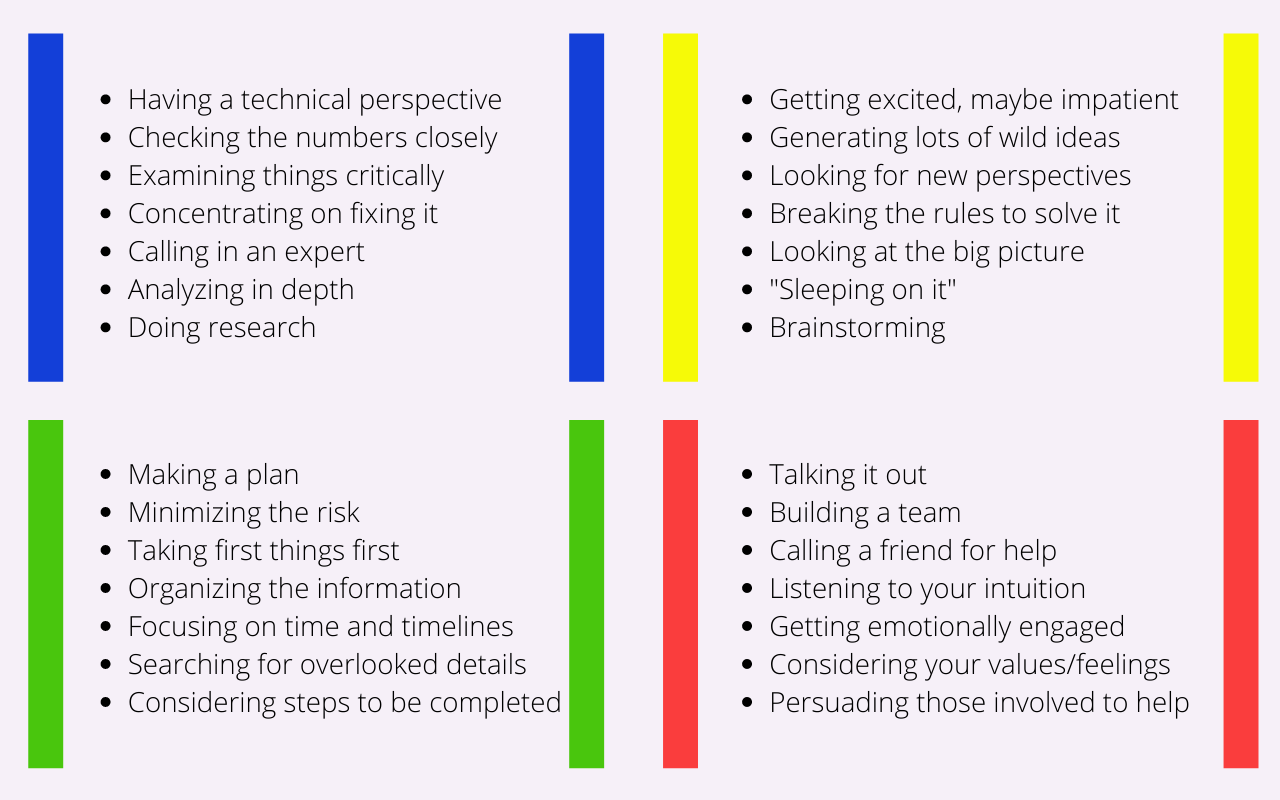On Solving Story Pickles

By Christine Carron
The past fwe weeks we have explored Whole Brain Thinking, identifying different ways you might use it and layering in deeper meaning and understanding of the model each week. For our final post in this first-ever Goodjelly cycle focused on Whole Brain Thinking, let’s dive into using the Whole Brain Model to address challenges in new, unexpected ways. Since we are of the writerly persuasion, we’ll focus on the challenge of story pickles.
What is a story pickle?
A story pickle is a story problem. It could be any time you feel stuck in how to move the story forward, i.e., you are a bit at a loss about what needs to happen next. That is a drafting mode story pickle. But there are absolutely revision mode story pickles. A chapter is falling flat. All of your first readers say they are bored during a scene. You’ve recognized one of your scenes is ableist. All the members of your critique group have indicated that there is too much inner monologue in an action scene and dragging on the intensity and excitement.
Story pickles can be huge or small, but regardless of size, sometimes they can stump us, meaning that our preferred problem-solving approaches are not getting us out of the pickle.
How Can Whole Brain Problem Solving Help with Story Pickles?
There are endless ways to solve problems, but we likely have go-to strategies based on our thinking preferences. The Whole Brain Model gives us clarity on which modes of thinking we currently rely on to solve story pickles. Here are examples from each mode:
-
Red Mode: Talking a problem out with your critique group.
-
Yellow Mode: Taking a shower, or sleeping on it, or going for a walk, knowing that if you do an intuitive leap—a Eureka moment will arrive.
-
Blue Mode: Finding a mentor text that effectively solves the pickle you are struggling with and analyzing how the author made it work.
-
Green Mode: Reading through the manuscript and scouring the story for a detail, or details, in the earlier chapters that point to a solution.
The following chart will help you identify even more of your strategies and clarify their corresponding Whole Brain Quadrants.
Whole Brain Problem Solving Strategies

Source: Herrmann Global, LLC
Once you have your go-to strategies identified, you will also have a sense of which strategies you use less often. These are the strategies that you can play with if your preferred strategies are falling short in a particular story pickle situation, i.e, you are stumped.
For example, maybe you are feeling overwhelmed with all the feedback you’ve received from your critique group (i.e., you are trying to solve too many story pickles at once), and even though you are generally not much of an organizer or planner, you take a stab at organizing the feedback and making a plan and as a result feel more in charge of the pickles. You just integrated a Green Mode problem-solving technique and gave yourself a confidence boost.
Such is the power of Whole Brain story-pickle-solving. Sweet!
The Goodjelly Prompt of the Week
-
Where do your go-to problem solving strategies fall in the Whole Brain Model? Does that track with your sense of your own thinking preferences?
-
Take a story pickle you are currently wrestling with and experiment using a strategy from the chart that you don’t use as often (or ever) and see if any pickle-solving magic happens.
Don't miss a single dollop of Goodjelly
Subscribe for the Latest Blog Posts & Exclusive Offers!
You can easily unsubscribe at any time.


